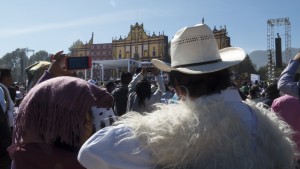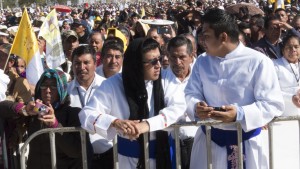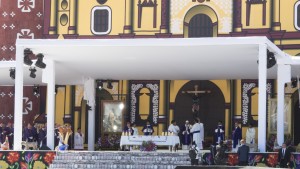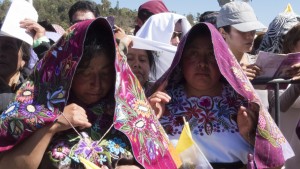 Pope Francisco’s visit to San Cristobel de Las Casas in the southern state of Chiapas was perhaps his most symbolic visit on his six-day tour of Mexico last week. Here the Bishop of Rome held mass with indigenous peoples, in a city internationally known for the uprising of the Zapatista Army for National Liberation in 1994, which inaugurated an era of indigenous self-government in parts of the state.
Pope Francisco’s visit to San Cristobel de Las Casas in the southern state of Chiapas was perhaps his most symbolic visit on his six-day tour of Mexico last week. Here the Bishop of Rome held mass with indigenous peoples, in a city internationally known for the uprising of the Zapatista Army for National Liberation in 1994, which inaugurated an era of indigenous self-government in parts of the state.
When he found out the pope was meeting with indigenous peoples, Julian Lopez Canare was surprised. “It’s the first time that a pope turns his attention to native peoples, or toward the poorest of the poor”, Lopez Canare, a member of the Nayeri people, observed.
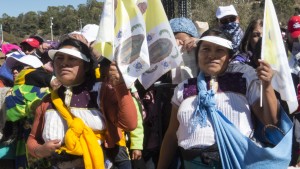 Thousands of people, mostly indigenous, flocked to San Cristobel’s sports arena on Feb. 15 to listen to the pope’s mass, spoken partly in Mayan languages. Pope Francisco delivered the mass from an altar decorated with Mayan Tzotzil craftwork, in front of a large backdrop depicting the city’s central cathedral.
Thousands of people, mostly indigenous, flocked to San Cristobel’s sports arena on Feb. 15 to listen to the pope’s mass, spoken partly in Mayan languages. Pope Francisco delivered the mass from an altar decorated with Mayan Tzotzil craftwork, in front of a large backdrop depicting the city’s central cathedral.
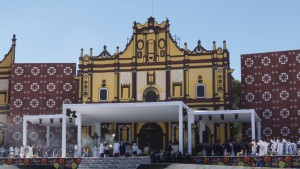 They came from remote corners of México and Central America. Many arrived before dawn and formed long lines in the intense cold of the Chiapas highlands. As they waited for the pope, from the stage speeches reminded the crowd of the pastoral work of the former bishop, Samuel Ruiz, and the San Andres Accords–an agreement negotiated in 1996 that set the framework for indigenous rights and autonomy. The federal government signed the document, but never made it law.
They came from remote corners of México and Central America. Many arrived before dawn and formed long lines in the intense cold of the Chiapas highlands. As they waited for the pope, from the stage speeches reminded the crowd of the pastoral work of the former bishop, Samuel Ruiz, and the San Andres Accords–an agreement negotiated in 1996 that set the framework for indigenous rights and autonomy. The federal government signed the document, but never made it law.
“Your peoples have been misunderstood and excluded from society. Some have considered your values, your cultures, your traditions, inferior. Others, deluded by power, money and the laws of the market, have robbed you of your lands or have carried out actions that pollute it,” the pope affirmed in his mass. He asked for forgiveness of the original peoples. At the conclusion, he delivered a decree that formally authorizes the celebration of liturgical ceremonies in indigenous languages.
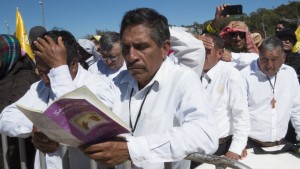 Pope Francisco’s visit to Mexico, and especially to Chiapas, is strategic for the Catholic Church. Mexico is the ninth nation in terms of contributions to the Vatican, according to Forbes magazine, and the second in the number of Catholic Church members, with 96 million. However, many people are leaving the Roman church. In Chiapas, only 58% of the population declares itself Catholic.
Pope Francisco’s visit to Mexico, and especially to Chiapas, is strategic for the Catholic Church. Mexico is the ninth nation in terms of contributions to the Vatican, according to Forbes magazine, and the second in the number of Catholic Church members, with 96 million. However, many people are leaving the Roman church. In Chiapas, only 58% of the population declares itself Catholic.
Mexican Catholicism varies from practices in other countries. Yaredh Marín Vazquez, anthropologist at the National School of Anthropology and History (ENAH), explains,
“The religion has a strong cultural connotation here. The practice of Catholicism in Mexico is called “Popular Catholicism”—it’s a mixture that includes local practices of the peoples who existed before the conquest. Catholic saints mingled with the pre-Hispanic gods and gave rise to new figures, ” she says.
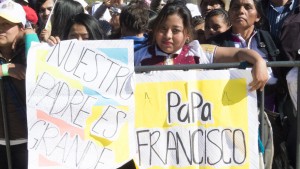
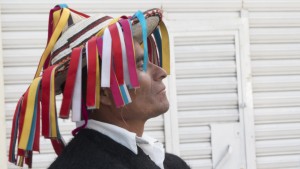 “For example the Virgin of Guadalupe (that the Pope prayed to in Mexico City) is a merger between the Catholic Virgin and the goddess of the earth. It is a useful fusion, because when they pray to the Virgin of Guadalupe, indigenous people also worship their goddess. The Catholic Church has no choice but to recognize these saints, because when they impose their doctrine they confront not only spiritual implications, but also economic.”
“For example the Virgin of Guadalupe (that the Pope prayed to in Mexico City) is a merger between the Catholic Virgin and the goddess of the earth. It is a useful fusion, because when they pray to the Virgin of Guadalupe, indigenous people also worship their goddess. The Catholic Church has no choice but to recognize these saints, because when they impose their doctrine they confront not only spiritual implications, but also economic.”
The papal visit aroused enthusiasm and reproaches in Chiapas. The Popular Assembly of the Chiapas Highlands (APACH) criticized the expenses incurred to meet the Pope in the poorest state in the country. In the highland region of Los Altos, where the city of San Cristobal lies nestled in the mountains, 88% of the population is indigent.
A much different group who call themselves “the real coletos ” (“coletos” is the term for residents of Sam Cristobal) also criticized the pope’s visit. Conservative mestizos, they criticized the pope’s visit because “it does not benefit the city ”, since he only came ”to hang around with the Indians,” according to a report in the newspaper La Jornada.
These townspeople virulently opposed the presence of indigenous people in the city center during the Zapatista uprising, In 1995, the “real coletos” came out to stone and throw eggs at the Cathedral of San Cristobal, to protest against then-Bishop Samuel Ruiz, whom they considered a “subversive “.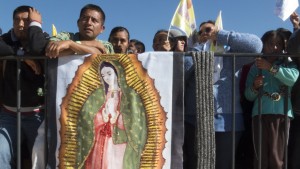
The Catholic Church hierarchy frowned on Ruiz’s pastoral work alongside indigenous peoples, for his adherence to the theology of liberation, his preaching in Mayan communities, and his participation in negotiations between the Zapatistas and the federal government.
For this reason, Pope Francisco’s decision to pray at the tomb of the former bishop raised controversy. “The Pope’s visit to Don Samuel Ruiz gives a boost to the work of Liberation Theology, the preferential option for the poor,” said Jorge Hernandez of the Human Rights Center Fray Bartolome de Las Casas, founded by Ruiz. “It’s the recognition that his work was valid and still is. It’s the recognition that the bishops are not princes, but have to get their hands dirty, walk w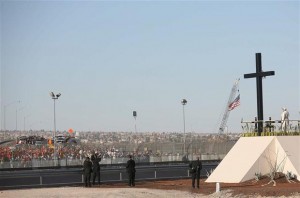 ith the people.”
ith the people.”
For groups and individuals who have reproached Pope Francisco for not meeting with the parents of the 43 students disappeared Ayotzinapa students or other victims’ organizations, the visit to the tomb of Samuel Ruiz was the most appreciated gesture off the papal visit. According to some analysts, the Pope’s messages were lukewarm and too general, and avoided touching on the specific problems of the country or naming names.
“You know, if you’re in hell, you can’t not mention the heat. But you also have to refer to the devils,” wrote journalist Alvaro Delgado in Proceso magazine.
Orsetta Bellani @sobreamerica es periodista independiente. Colabora con el CIP Programa de las Américas www.americas.org/es